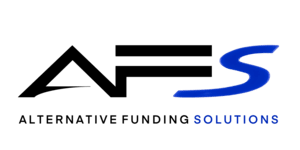Managing cash flow is one of the biggest challenges small businesses face. Seasonal slowdowns, unexpected expenses, or growth opportunities can strain working capital. A revolving line of credit offers flexible, ongoing access to funds, making it an ideal solution for keeping your business financially stable.
- Summary
- The article explains how revolving lines of credit provide small businesses with flexible access to funds, helping them manage cash flow challenges more effectively.
- It highlights the differences between secured and unsecured lines of credit, outlining their benefits, risks, and ideal use cases for various business needs.
- The blog explores how revolving credit can smooth seasonal cash flow, cover unexpected expenses, and fund growth opportunities without disrupting operations.
- It also shares practical tips for using revolving credit wisely, such as borrowing strategically, tracking usage, understanding terms and fees, and maintaining a strong credit profile.
- Finally, a case study showcases how the Greenhouse Café successfully used a revolving line of credit to sustain operations during off-peak months and stabilize its finances.
What is a Revolving Line of Credit?
A revolving line of credit works similarly to a credit card, where businesses are given access to a set amount of funds (the credit limit). Unlike a traditional loan, which is paid in full, a revolving line of credit allows businesses to borrow and repay multiple times, as long as they don’t exceed the credit limit.
Key Features of a Revolving Line of Credit:
- Flexible Borrowing: Borrow what you need up to the limit, and only pay interest on the borrowed amount.
- Revolving Credit: As you repay the credit, the amount becomes available for use again.
- Repayment Terms: Typically, businesses are required to make minimum payments (usually covering the interest and some principal) each month.
This flexibility makes revolving lines of credit particularly useful for managing cash flow, paying bills, covering expenses, or even funding growth initiatives.
Unsecured vs. Secured Lines of Credit: Which Is Better?
Businesses can choose between two primary types of revolving credit: unsecured and secured. The main difference between the two is the requirement of collateral, which impacts interest rates, approval times, and overall credit limits.
Unsecured Business Line of Credit
An unsecured business line of credit is not backed by any collateral, meaning business owners don’t have to pledge assets such as inventory, equipment, or real estate. This makes unsecured credit lines an appealing choice for businesses that may not have valuable assets or those who want to avoid putting their property at risk.
Approval for an unsecured credit line is typically based on the business’s creditworthiness, financial history, and overall ability to repay. Lenders may look at the company’s revenue, profit margins, and credit score to assess risk.
Pros:
- No collateral required
- Faster application and approval
- Great for startups and asset-light businesses
Cons:
- Higher interest rates
- Stricter eligibility requirements
- Lower credit limits
Secured Business Line of Credit
A secured business line of credit is backed by collateral, such as business inventory, real estate, or equipment. By offering collateral, businesses reduce the risk for lenders, which may allow them to secure larger credit limits and better terms. This option is ideal for businesses that have valuable assets but may not have strong credit scores or financial histories.
The application process for a secured line of credit typically involves a more thorough review, as lenders need to assess the value of the collateral. Additionally, businesses may need to provide regular updates on the value and condition of the pledged assets.
Pros:
- Lower interest rates
- Higher credit limits
- Easier approval with less-than-perfect credit
Cons:
- Risk of losing pledged assets if you default
- More documentation and a longer application process
Case Study: Small Business Success Using Revolving Credit
The Greenhouse Café, a small cafe, struggled with cash flow during the winter months when tourism slowed down. To keep the business running smoothly during this off-peak season, the cafe used a revolving line of credit to cover fixed expenses such as rent, utilities, and payroll. By strategically using the credit, the cafe was able to make it through the slower months, and once business picked up in the spring, they paid down the balance. This allowed them to maintain stable operations without taking on too much debt.
How Revolving Credit Helps with Cash Flow
Effective cash flow management is critical for small business success. A revolving line of credit provides a safety net in several scenarios:
- Smooth Seasonal Fluctuations – Cover operating expenses during slow months and repay when revenue increases.
- Handle Unexpected Expense – Access quick funding for emergency repairs, equipment failures, or sudden costs.
- Seize Growth Opportunities – Invest in marketing, inventory, or hiring when opportunities arise without waiting for cash flow to catch up.
Common Challenges and Considerations When Using Revolving Credit
Though revolving lines of credit are highly beneficial, they come with certain risks and considerations that businesses must keep in mind:
Over-Reliance on Credit
Using a revolving line of credit too frequently can lead to a cycle of debt. If a business continually borrows without paying down the balance, it can quickly become overwhelmed by interest charges and fees.
Understanding Terms and Fees
It’s essential to fully understand the terms of a revolving line of credit. While some lines of credit have low interest rates, others may charge annual fees, late payment penalties, or origination fees. Before committing, businesses should carefully review the credit agreement to avoid hidden costs.
Balancing with Other Funding Options
A revolving line of credit is one tool in a small business’s financial toolkit, but it’s essential to balance it with other funding sources. In some cases, business loans, grants, or equity financing might be more appropriate for long-term growth or large-scale investments.
Tips for Using a Revolving Line of Credit Wisely
Using a revolving line of credit effectively can strengthen your business’s financial health. Here’s how to make the most of it:
- Borrow Strategically, Not Excessively – Use your credit line only for necessary expenses or opportunities that drive growth. Avoid relying on it for day-to-day operations whenever possible.
- Monitor Your Usage Regularly – Keep track of how much you’ve borrowed and repaid. Staying within safe limits ensures you maintain financial flexibility when unexpected needs arise.
- Understand All Terms and Fees – Review the fine print interest rates, repayment schedules, and any potential fees. Knowing the costs upfront helps you avoid surprises and better plan repayments.
- Protect and Build Your Credit Score – Make timely payments and keep utilization low. A strong credit profile can unlock higher limits, lower interest rates, and better financing options in the future.
Frequently Asked Questions (FAQs)
Q. How is a revolving line of credit different from a business loan?
A loan gives you a lump sum with fixed repayments, while a credit line offers ongoing access to funds.
Q. How do I qualify for one?
Lenders review your revenue, credit score, and financial history. Secured lines require collateral.
Q. Can I use it for payroll?
Yes, many businesses use revolving credit to cover payroll during cash flow gaps.
Q. What are the risks?
Overusing credit or missing payments can lead to debt and higher interest costs.
Conclusion
Revolving lines of credit give small businesses the financial flexibility to manage cash flow, handle unexpected expenses, and seize growth opportunities with confidence. When used strategically, they can be a powerful tool to keep your operations running smoothly and your business moving forward.
At Alternative Funding Solutions, we specialize in helping small businesses secure flexible financing options, including revolving lines of credit. Contact us today to find out how we can help you smooth out cash flow, cover short-term needs, and fuel long-term growth.

